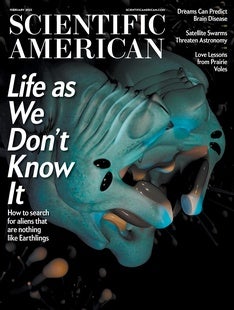 |
| February 21, 2023 |
Earlier this month, when the U.S. government shot down three airborne objects over the course of three days, most experts concluded those objects were balloons. But because they were technically unidentified flying objects, people immediately began speculating about whether they could be extraterrestrial technology. And this is probably not the first time that balloons have been mistaken for UFOs, Mick West explains in this week's main story. Many of the sightings catalogued over the past decade were balloons—and some of them could have been spying on the U.S. on behalf of foreign powers. |
| |
 |
| |
| |
| |
| |
| |
| |
| Artificial Intelligence Who Is Liable When AI Kills? We need to change rules and institutions while still promoting innovation to protect people from faulty AI | | By George Maliha,Ravi B. Parikh | | | |
| |
| |
| |
| |
FROM THE STORE
 | | | |
| QUOTE OF THE DAY
 "In a research paper in June of last year, OpenAI said it trained a computer model to play Minecraft by having it watch 70,000 hours of videos of real people playing the game. It was able to get the model to take on increasingly advanced tasks in the game, such as constructing wooden tools and crafting tables. Recent advances in AI, though, could take those capabilities from the research lab to the real world, making the game exponentially easier and possibly more appealing to a broader audience." Reed Albergotti, Semafor | |
FROM THE ARCHIVE
 | | | |
LATEST ISSUES
 |
| |
| Questions? Comments?  | |
| Download the Scientific American App |
| |
| |























